Boeing just unveiled a new 777 'ecoDemonstrator' jet that will test ways to make plane travel safer and more efficient take a look at the huge testbed

Taylor Rains/Insider
- Boeing just debuted its 2022 ecoDemonstrator, a 777-200ER aircraft previously used as a passenger jet.
- The plane will test 30 new technologies aimed at improving safety, efficiency, and sustainability.
Boeing has officially unveiled its newest ecoDemonstrator: a 777-200ER aircraft that once operated as a passenger jet.
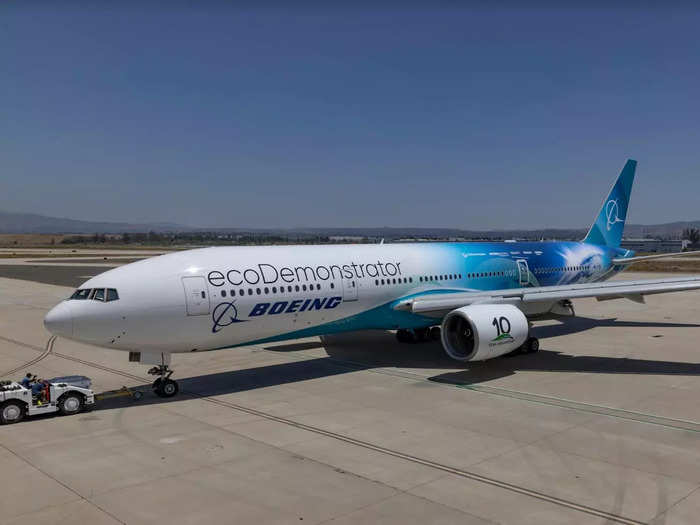
The Boeing 2022 ecoDemonstrator will test 30 technologies to enhance safety and sustainability. Shown here, the 2022 ecoDemonstrator – a Boeing-owned 777-200 ER (Extended Range) after being painted in San Bernardino, Calif., in June. Boeing
The plane flew for Singapore Airlines, Air New Zealand, and Suriname Airways before being converted into a testbed for the American manufacturer.
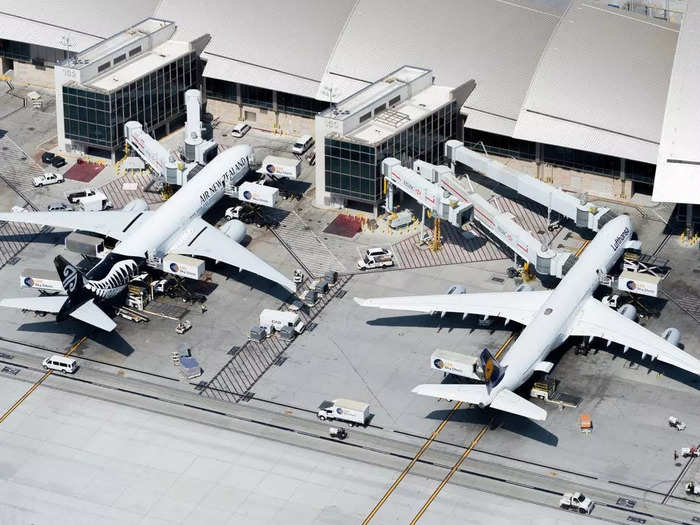
Air New Zealand Boeing 777 at the gate at LAX (not the ecoDemonstrator). Thiago B Trevisan/Shutterstock
Since the program was launched 10 years ago, Boeing has converted nine planes into ecoDemonstrators, like an American Airlines 737-800 in 2012, which was the first one built…
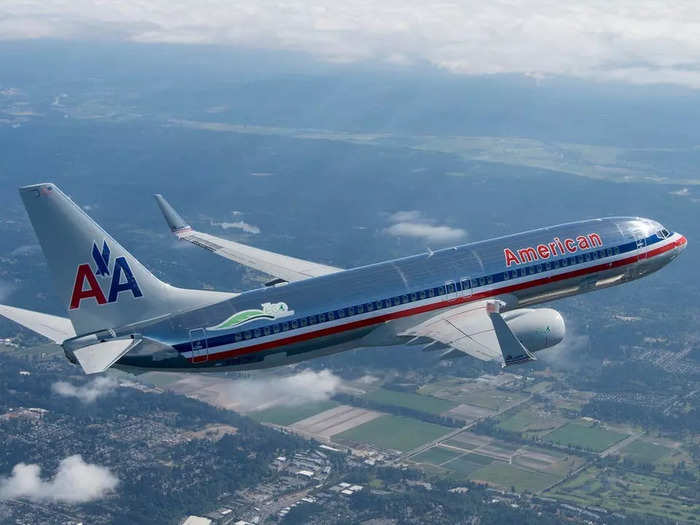
Boeing
…an Embraer 170 in 2016…
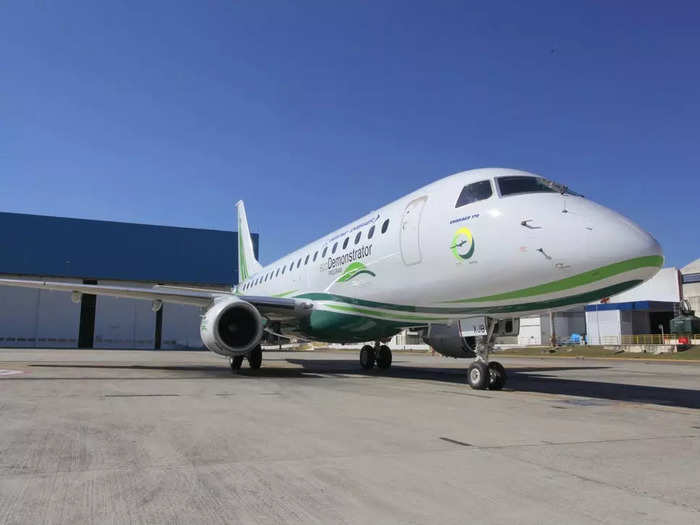
Boeing
…and an Etihad 787-10 in 2020.
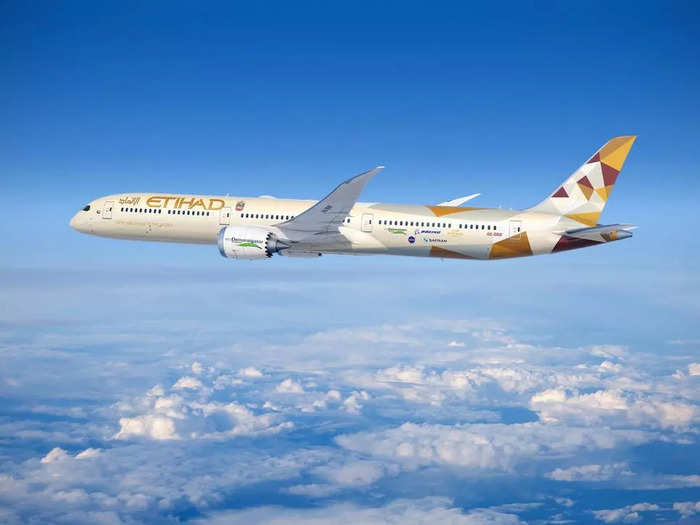
Boeing
According to the planemaker, the purpose of the program is to improve aircraft operational efficiency and safety, decrease the industry's environmental footprint, and enhance the customer experience.
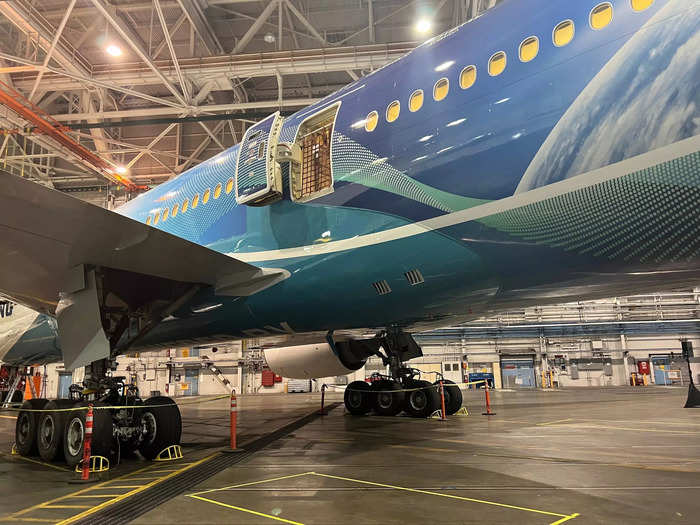
Taylor Rains/Insider
Insider was invited to tour the ninth ecoDemonstrator at Boeing's facilities in Seattle to learn about the technologies being trialed. Take a look.
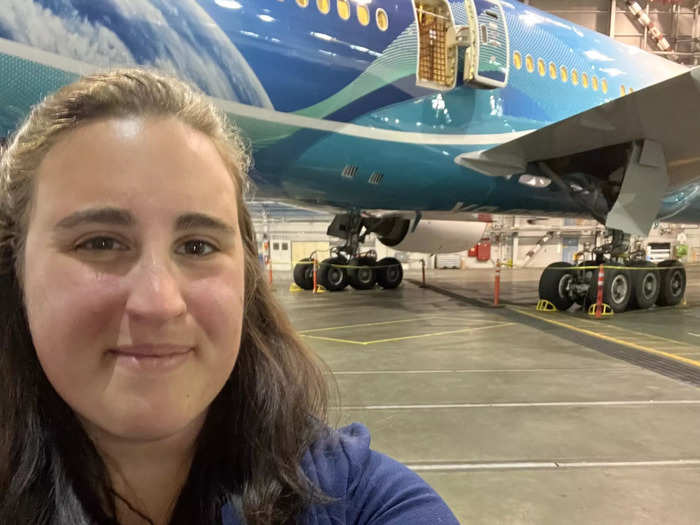
Taylor Rains/Insider
The 777-200ER is not the first time Boeing has used a 777 variant for its ecoDemonstrator program.
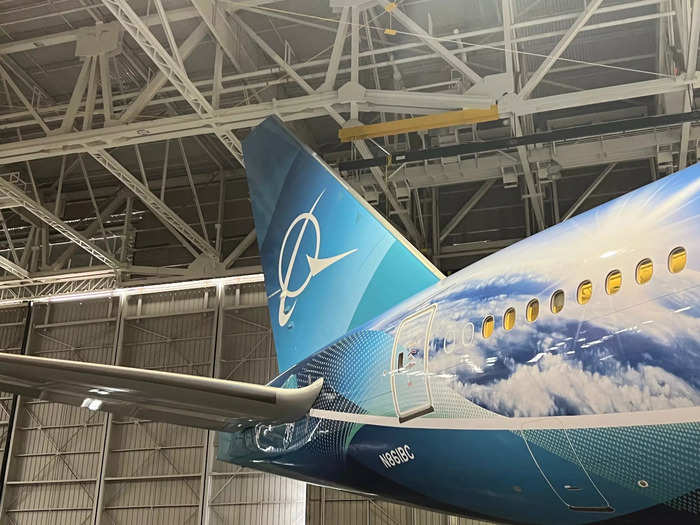
Taylor Rains/Insider
According to Chad Lloyd, Boeing's deputy manager of the ecoDemonstrator program, the plane was chosen because it was available and the company wanted to retest some of the technologies already tested on a 777-200 in 2019.
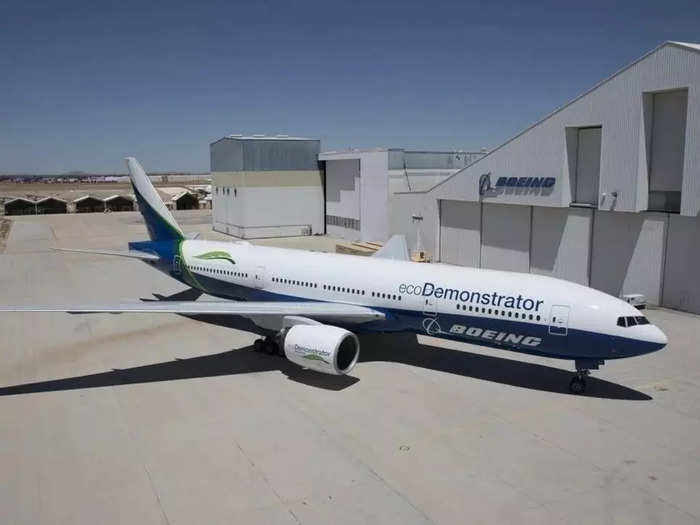
The Boeing 777-200 ecoDemonstrator in 2019. Boeing
During the tour, Lloyd explained that 30 tests will be done on the aircraft. This brings the program's total testing to 230 technologies across all nine planes.
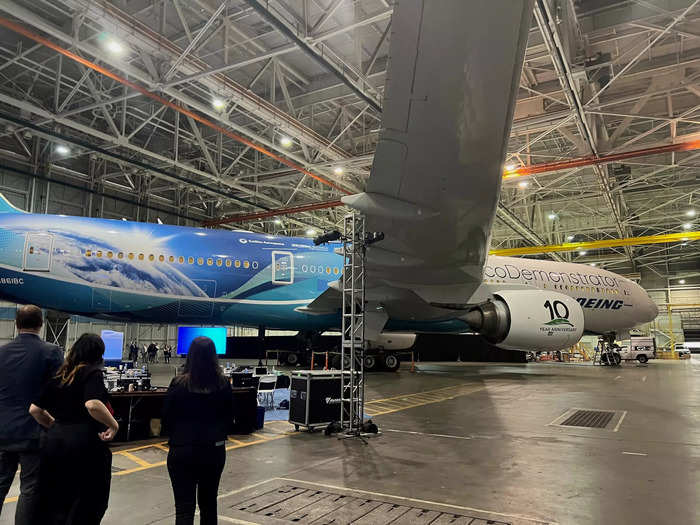
Taylor Rains/Insider
One consistent focus across each platform is sustainable aviation fuel (SAF). By 2030, the company has committed to delivering all of its commercial planes with the capability to operate on 100% SAF.
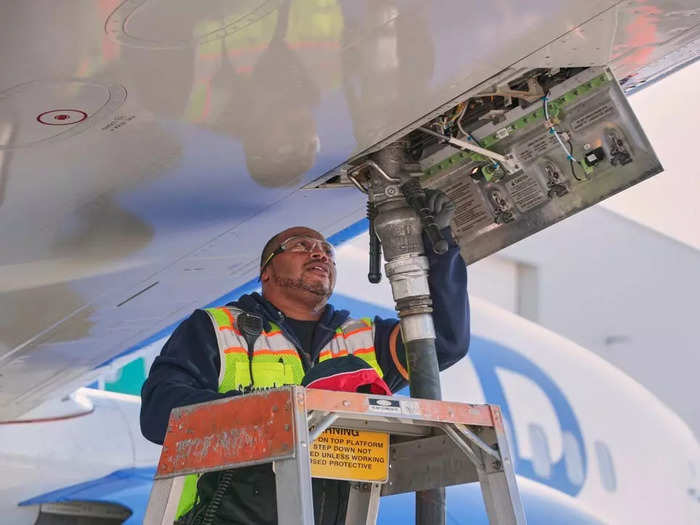
United Airlines is the first airline in the world to use 100% SAF on a passenger flight. United Airlines
In 2021, the company partnered with NASA to test the biofuel on an Alaska Airlines 737-9 and measure the emissions with different blends of SAF and traditional jet fuel, including 100% SAF.
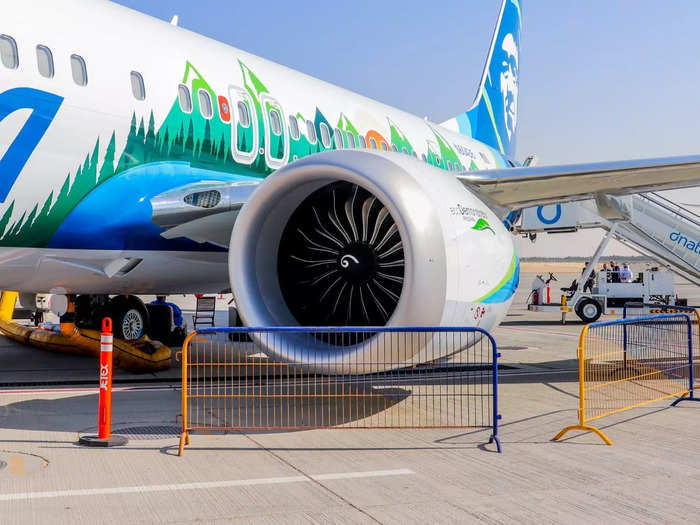
An Alaska Airlines Boeing 737 Max 9 EcoDemonstrator. Thomas Pallini/Insider
This year, the NASA partnership will continue on the 777-200ER, but with a different engine type. The 2022 ecoDemonstrator is equipped with Rolls-Royce Trent 800 engines.

Seattle Times
"Engine architecture matters," Lloyd said. "It has an influence on what comes out the back end as exhaust."
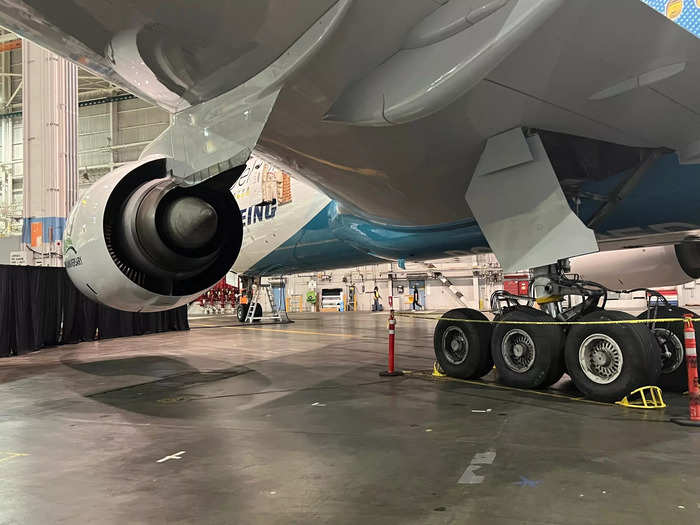
Taylor Rains/Insider
When not testing the experimental SAF blend, Lloyd said the plane will operate with the highest blend of SAF available, which the planemaker believes to be 30% SAF and 70% jet fuel.
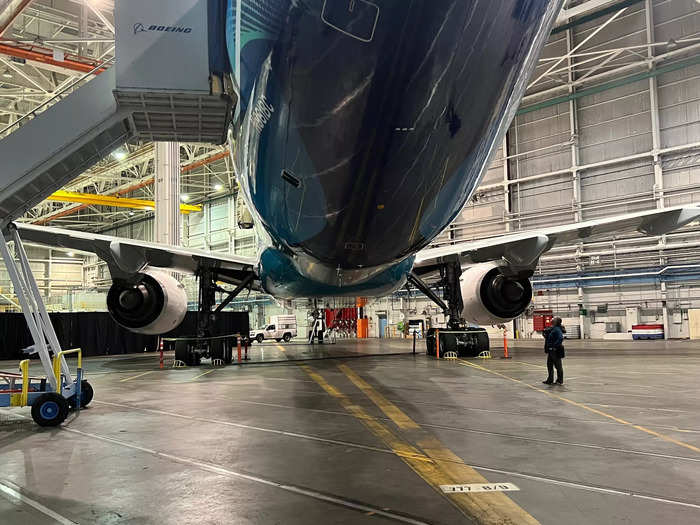
Taylor Rains/Insider
Another technology being tested on the ecoDemonstrator is "additive manufacturing," which allows Boeing to design parts that are lower weight and use less waste and energy in the process. This is because the part is being scaled up rather than subtracting material from a bigger piece.
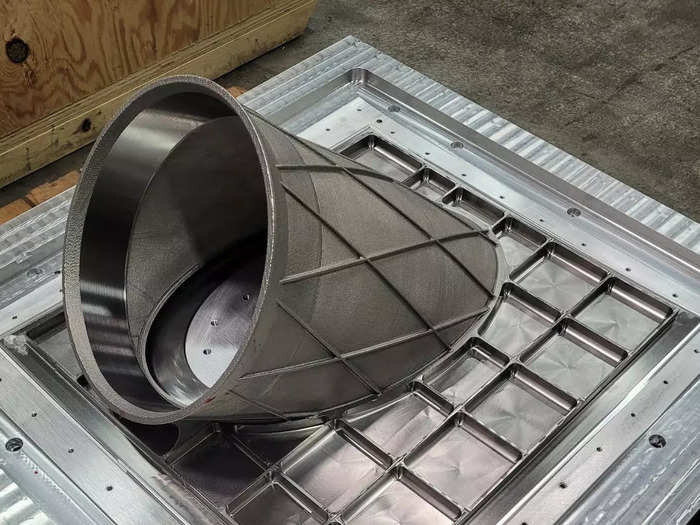
The 2022 Boeing ecoDemonstrator will test this additively manufactured auxiliary power unit (APU) exhaust duct support panel. Additive manufacturing reduces weight and fuel use on the airplane and reduces material waste during the manufacturing process. Boeing
Two parts of additive manufacturing will be on the 2022 ecoDemonstrator: one on the tail and a second in the engine.
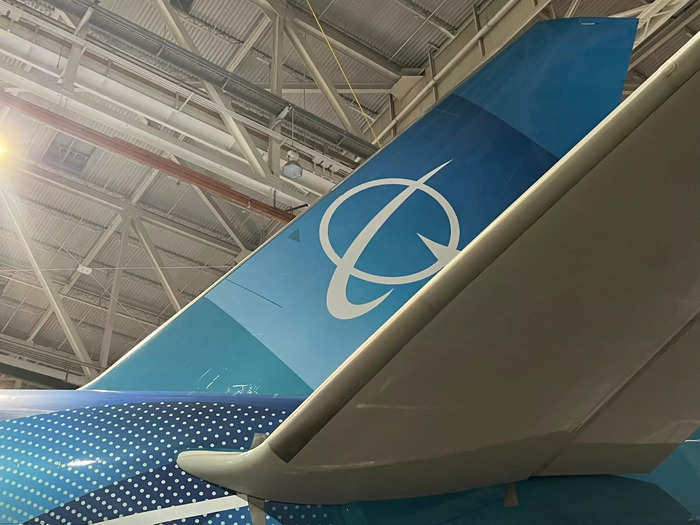
Both pieces will be made of titanium. Taylor Rains/Insider
Several other technologies will be installed inside the plane, as well as systems to monitor and report the data. To create an environment for flight testing, the plane was gutted of its seats and carpet.
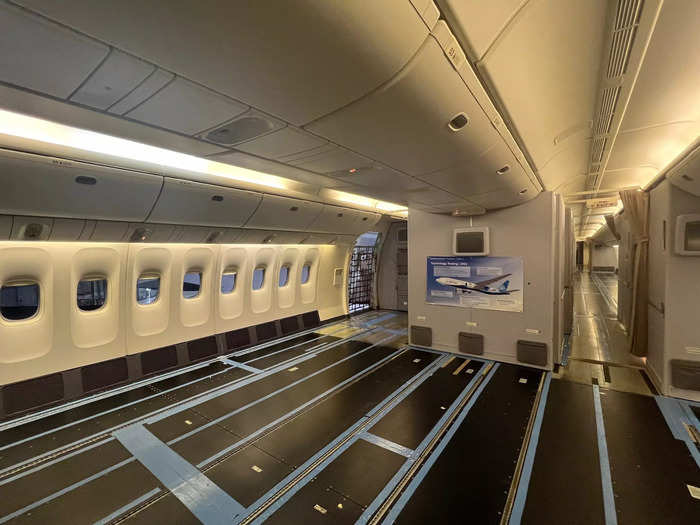
Taylor Rains/Insider
However, overhead bins were left in place, with a few holding emergency equipment, like a first aid kit and fire extinguisher.
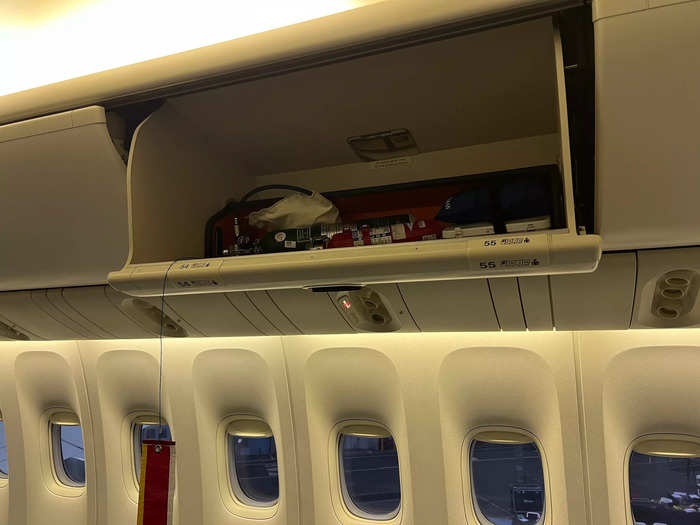
Taylor Rains/Insider
The galleys and jumpseats were also still installed. According to Lloyd, the front galley is used to store food and drinks for the engineers during test flights, which can last four to five hours.
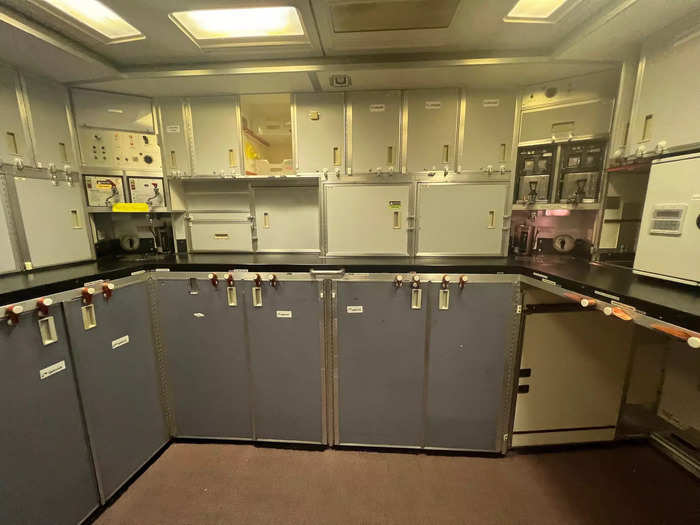
Taylor Rains/Insider
While Lloyd said no technologies have been installed yet, the company is currently prepping the plane to bring them onboard.
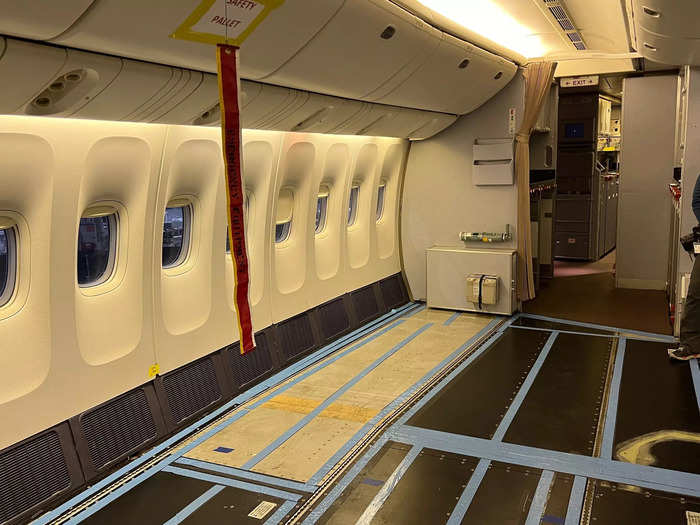
Taylor Rains/Insider
Two technologies will be installed at the back of the aircraft, including a refrigerant in the aft galley and tray tables made of natural materials that will be attached to seats in the aft cabin.
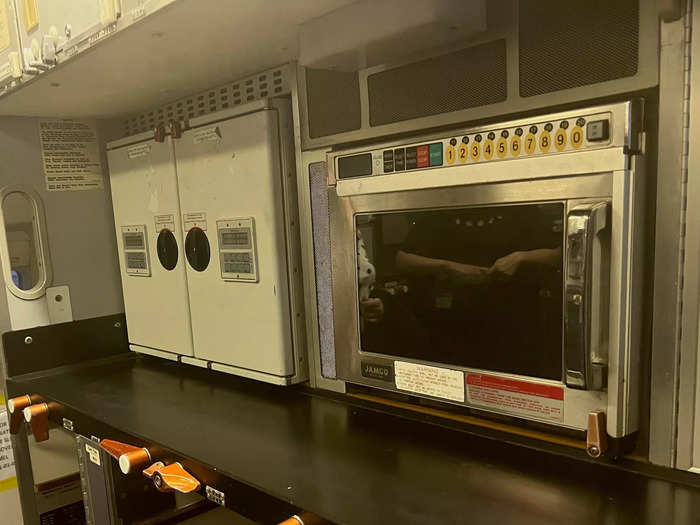
Taylor Rains/Insider
The refrigerant currently used on aircraft contains a potent greenhouse gas, which can be harmful if it leaks. So, in partnership with Collins Aerospace, Boeing is testing an "environmentally preferred" alternate on the ecoDemonstrator.
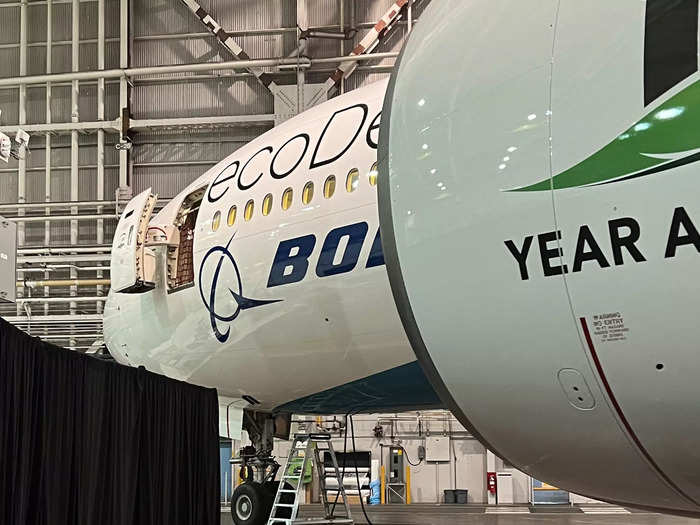
Taylor Rains/Insider
Meanwhile, the tray tables will be made of natural fiber manufactured with biodegradable materials. The flight crews will test the durability of the tray tables during flights.
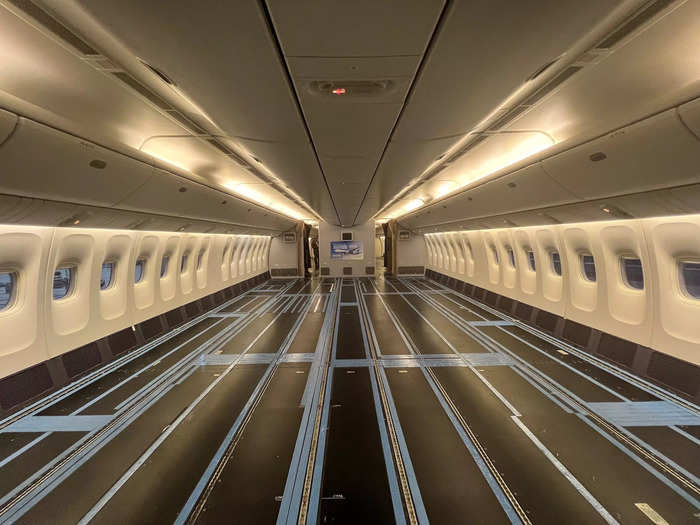
Taylor Rains/Insider
In the middle cabin, a "self-disinfecting lavatory" with embedded UV lights will be installed. UV lights will also be tested in the aft galley to better clean surfaces.
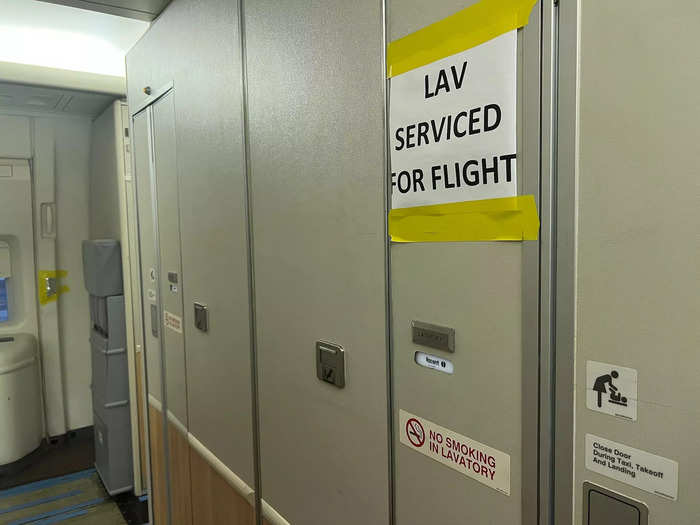
Taylor Rains/Insider
Another sanitation effort being tested on the lavatory is a "hands-free" latch and lock that will negate the need to touch the door or knob.
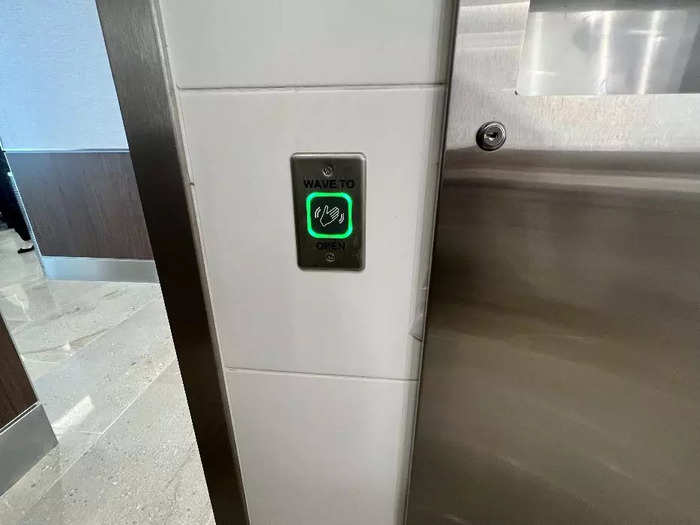
Hands-free entry and exit at Delta's SkyClub lounge bathrooms at LGA. Taylor Rains/Insider
A second lavatory will be installed that will house a water conservation system. The technology sanitizes waste water from hand washing and reuses it to flush the toilet, saving 50 gallons worth of water per flight.
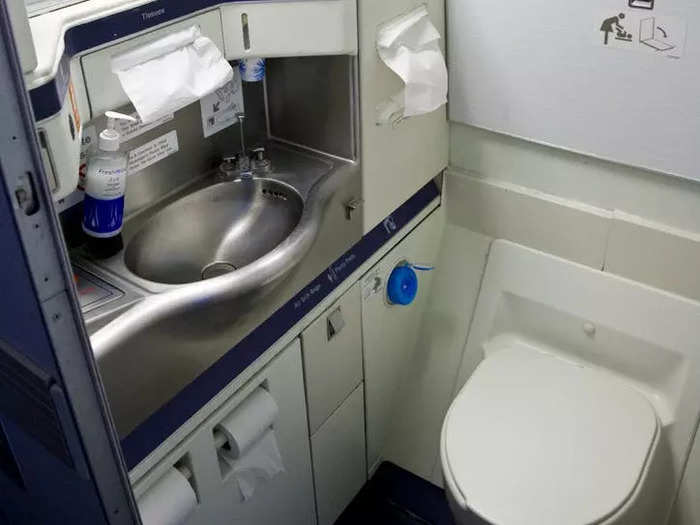
British Airways 747 lavatory. James Leynse/Corbis via Getty Images
On the wing, another technology will be tested to reduce drag during cruise.
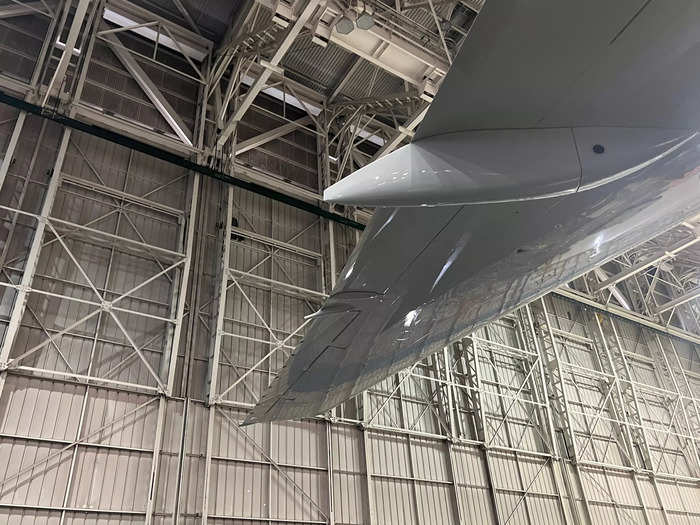
Taylor Rains/Insider
Currently, the wing houses vortex generators (VG) that improve aerodynamic efficiency during takeoff and landing, but the technology actually increases drag at high altitudes.
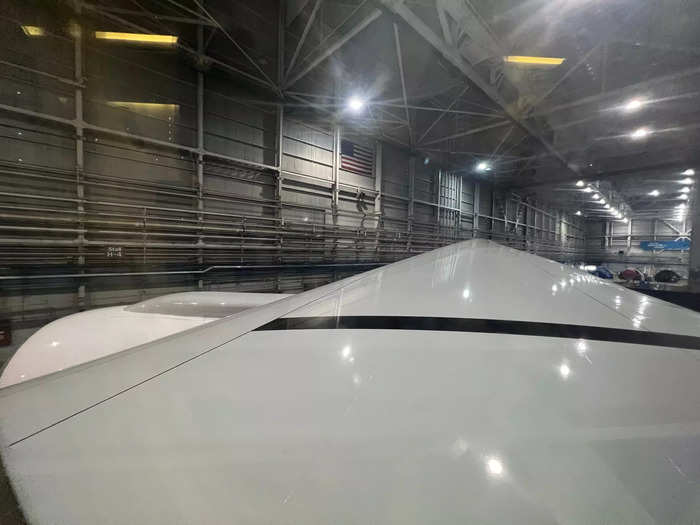
Taylor Rains/Insider
As a solution, Boeing is testing "SMART VG," which combines the current VGs with a NASA-engineered metal that changes shape with temperature. This means the VGs could fold down and store into the wing on command during cruise, reducing drag.
In the belly is another technology to replace halon 1301, which is the industry standard fire suppressant used on aircraft, but it has ozone-depleting properties.
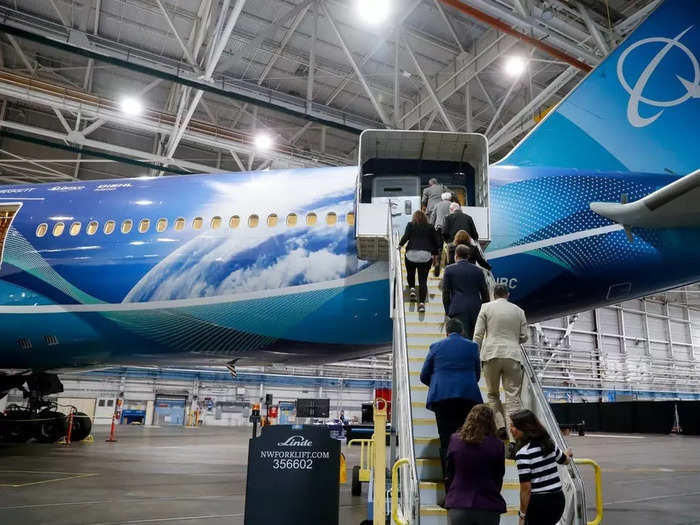
Seattle Times
Boeing is testing alternative agents that will replace halon by 2040, which is an industry-mandated goal, according to Lloyd.
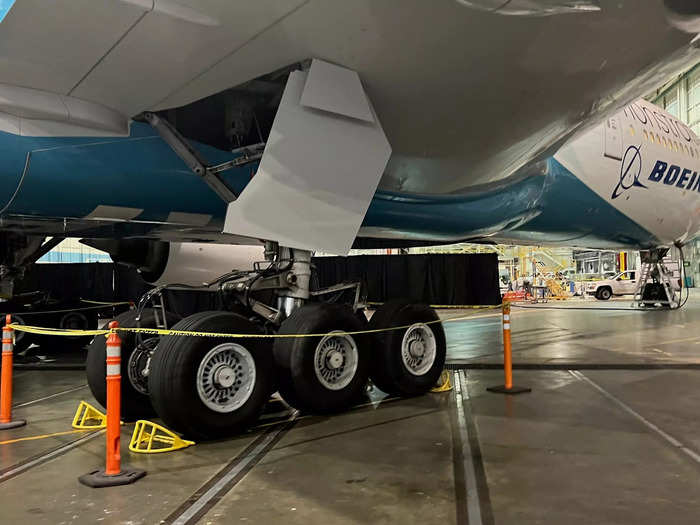
Taylor Rains/Insider
The former business class section is where the flight test systems will be located. The engineers are responsible for the safety of the plane and the crew, as well as reporting quality data.
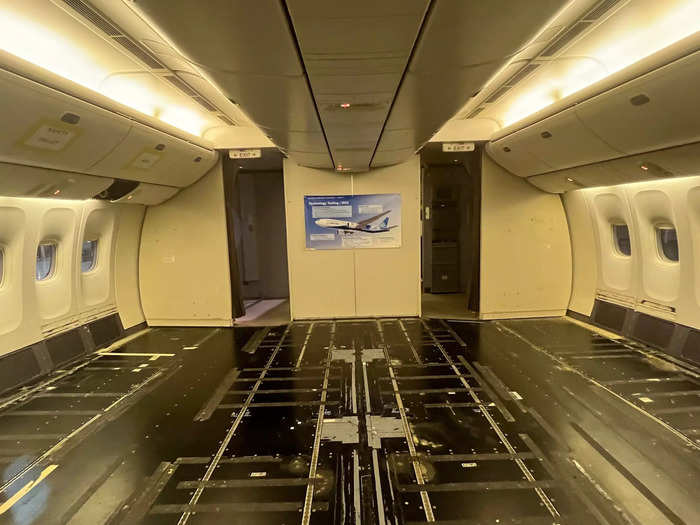
Taylor Rains/Insider
In the cockpit, Boeing is testing a new flight test display for pilots. Instead of fixed monitors installed on a panel in the crew's line of sight, the company is creating a "head-worn heads-up display with an enhanced vision system."
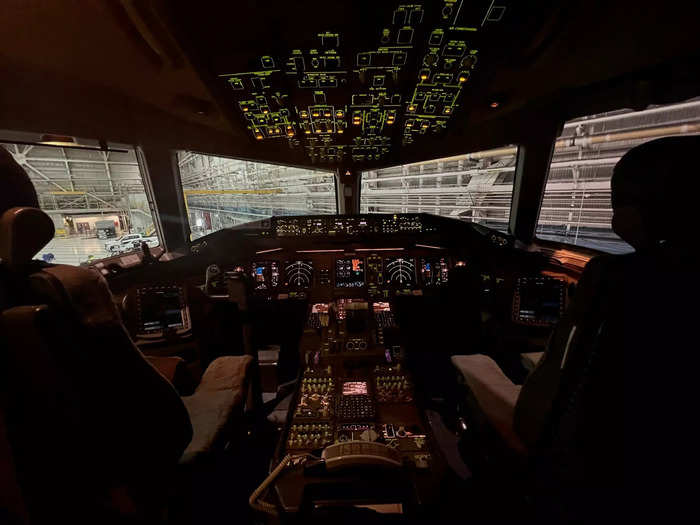
Taylor Rains/Insider
This means the pilots will wear a hat-like system that will display things like airspeed and altitude on glass, but they can also look through the glass out at their surroundings. This is intended to help with situational awareness, according to Lloyd.
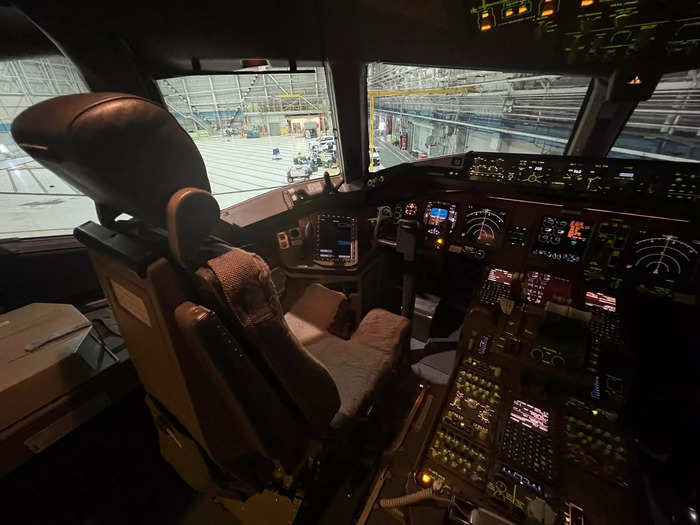
Taylor Rains/Insider
The enhanced vision system connects to a camera on the nose of the plane that "augments the pilot's vision through that headset display to give them additional visibility in low visibility situations," Lloyd said.
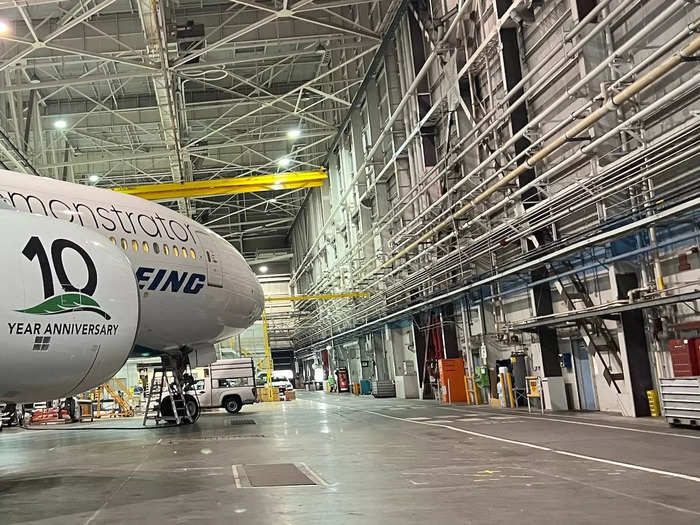
Taylor Rains/Insider
Another flight deck innovation being tested is a system capable of knowing when to use a single-engine taxi, which would reduce fuel burn.
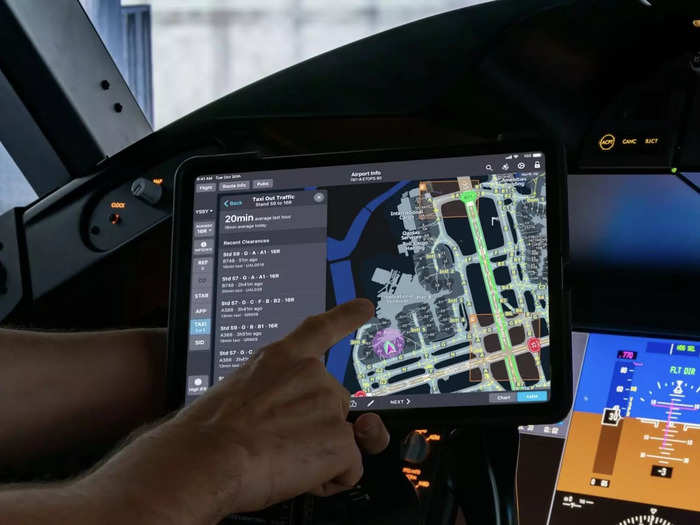
Boeing
The 777-200ER ecoDemonstrator will begin six months of flight and ground testing this summer.
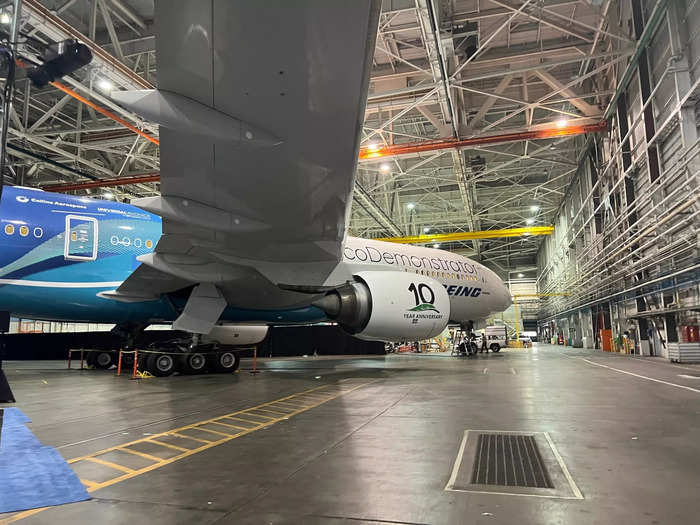
Taylor Rains/Insider
"The Boeing ecoDemonstrator program brings together the two most important ingredients to a more sustainable future – innovative technologies and partnerships with customers, suppliers, government agencies, and academia," Boeing's chief sustainability officer Chris Raymond said.
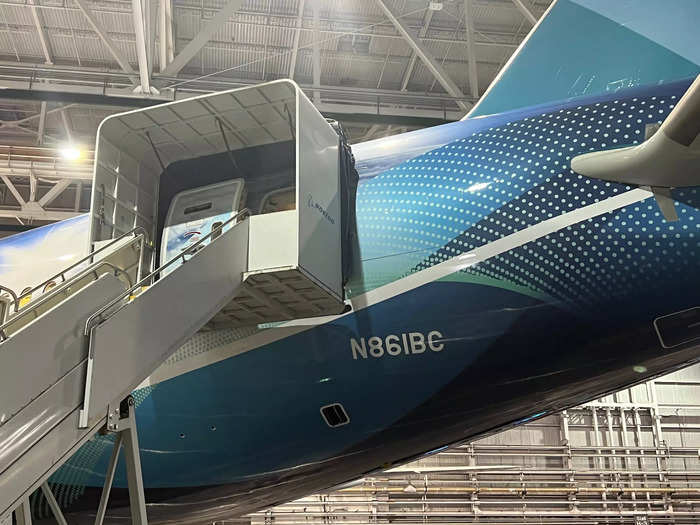
Taylor Rains/Insider
This year's ecoDemonstrator celebrates Boeing's 10th anniversary of the future-focused program.
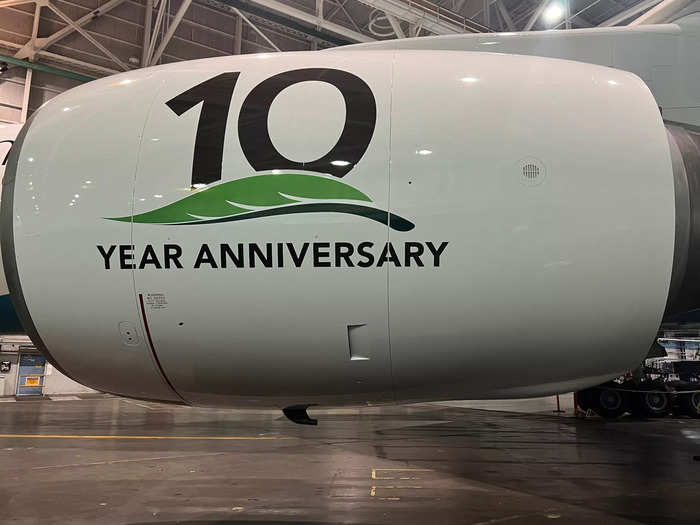
Taylor Rains/Insider
The plane's livery represents the decade-long work to innovate and improve Boeing technologies, like the "more aerodynamically efficient winglets" on the 737 MAX jets.
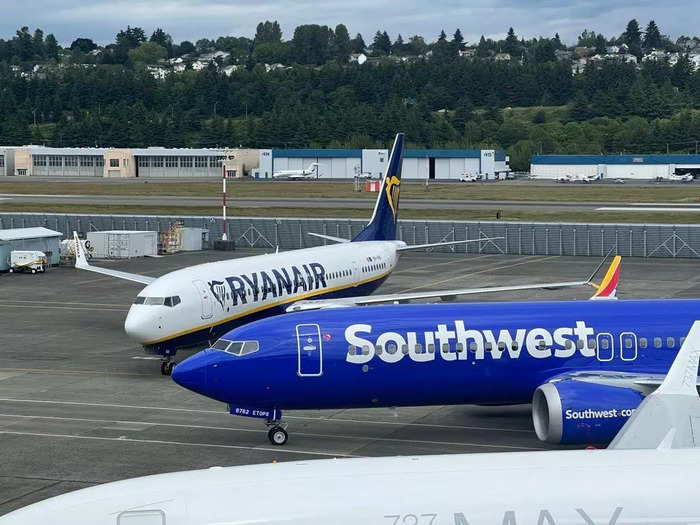
Taylor Rains/Insider
While it may seem that all the efforts are individually small, like 50 gallons of water conserved, they can collectively make a big impact, Boeing vice president of product development Mike Sinnett explained.
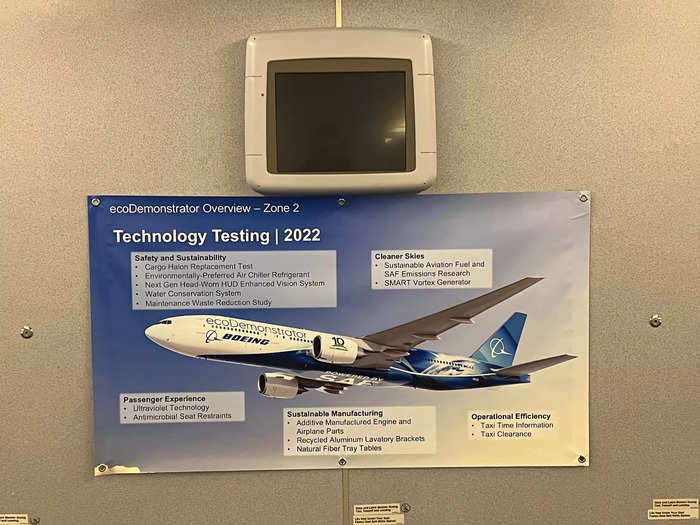
Taylor Rains/Insider
"We aren't looking for the big grand slams," he said. "Historically, we've seen 15%-20% better fuel burn on current generation [planes] compared to previous generations, and probably half of that comes from the plane and half from the engine."
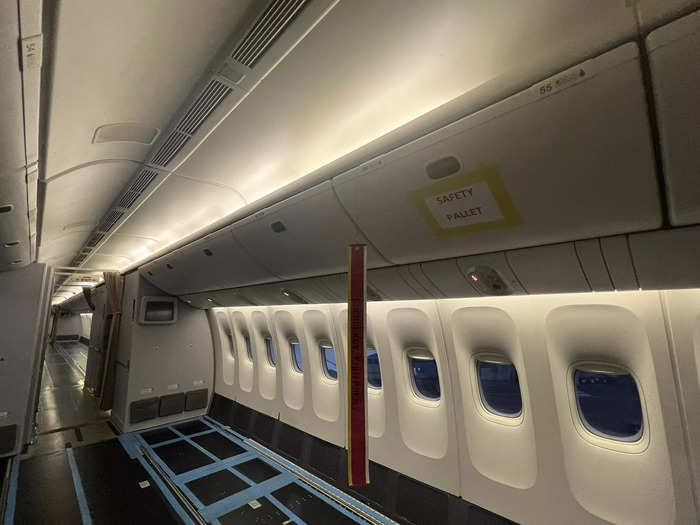
Taylor Rains/Insider
"The half from the plane is never one thing, it's 20, 30, or 40 little things," he continued. "What the ecoDemonstrator does for us is it gives us a toolkit of all these little things that when added together makes a significant difference."
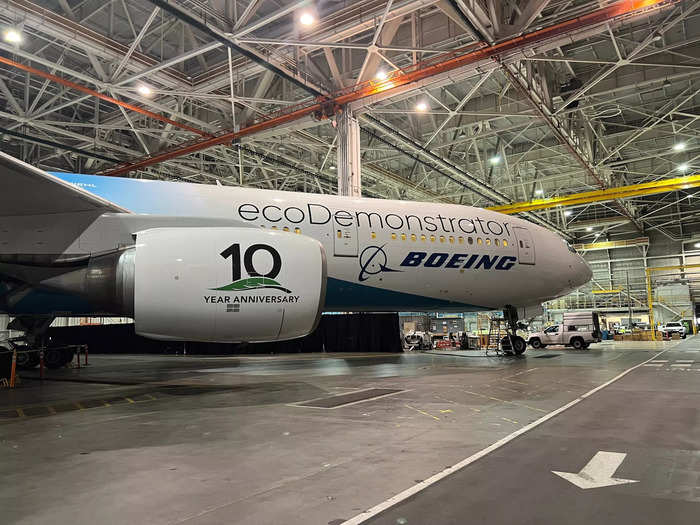
Taylor Rains/Insider
READ MORE ARTICLES ON
Popular Right Now
Advertisement